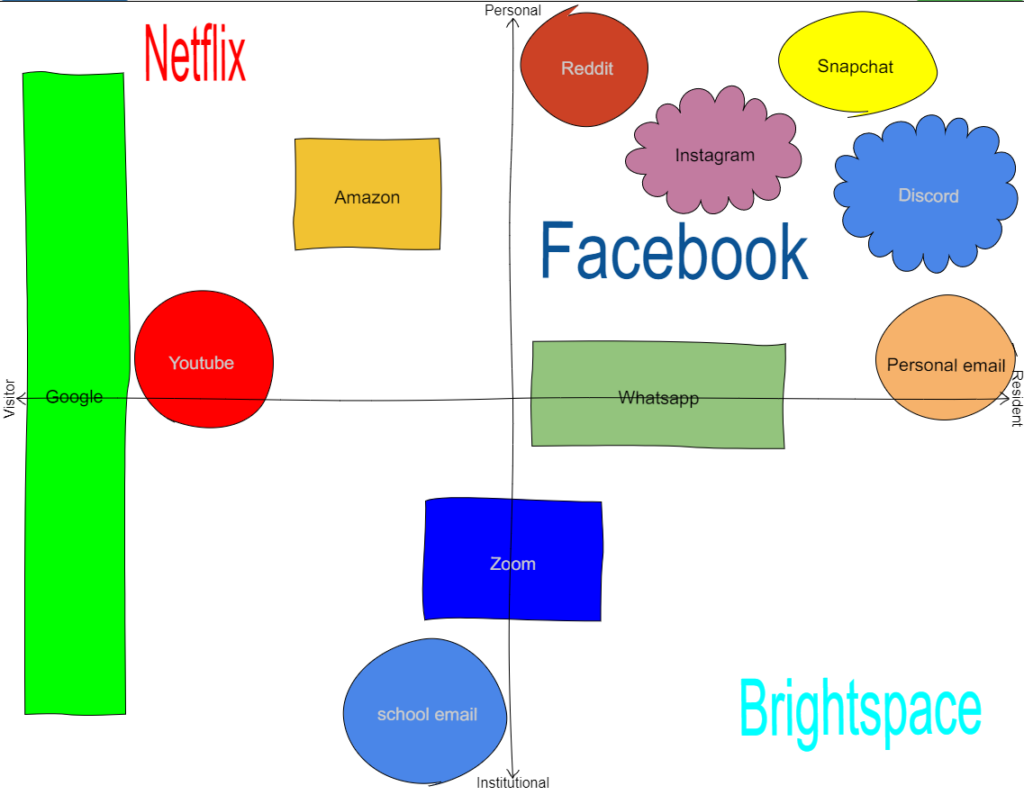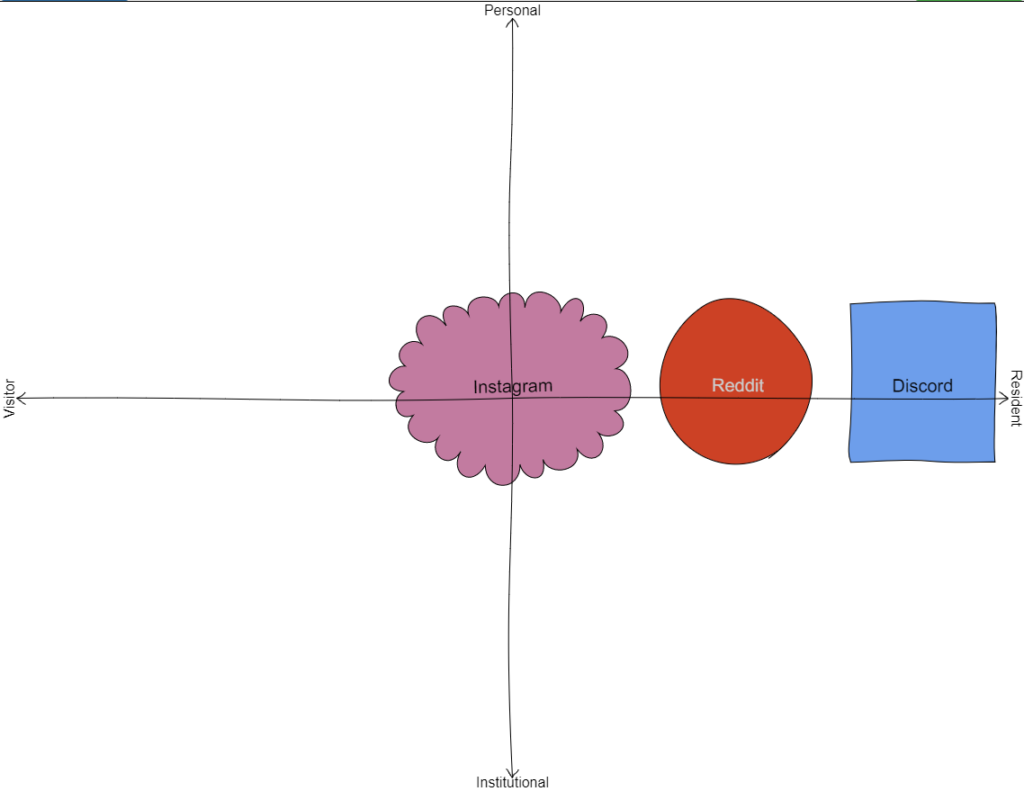Every young person know how hard it can be to help older family members understand modern technology. Have you ever thought about why that is? Or if the same would happen to you in time? Are some people simply better at adapting to the ever changing technologies of the modern age? These are the questions that David White from the University of Oxford seeks to answer with his Visitor and Resident model.
The Visitor and Resident model offers a fresh perspective on the topic, measuring how we engage with different technologies and platforms to determine our “status”. On the Visitor-Resident continuum, a visitor is someone who uses a platform as a tool that they put away after use, leaving no social trace (eg. purchasing items from online vendors or watching an online video). On the other hand, a resident engages an online platform with social purposes in mind. They use these platforms to communicate, socialize and share their thoughts, leaving social footprints after closing the website. According to White, in his series of Youtube guides, most of us will use a combination of visitor mode and resident mode when we go online. This leads to his concept of “V&R mapping”.

Above is my version of a V&R map, with my most used online platforms. You can create your own version here.
The map consists of two axes: the aforementioned Visitor-Resident axis and the Personal-Institutional axis. The Personal-Institutional relates to the purpose of your usage of an online platform, personal use and professional use (eg. watching a cat video because cats are adorable vs. watching a cat video because you have to write a report about feline biology). These two axes together allows us to reflect on how we engage with these platforms. As a student, platforms with specific educational purposes lie in the bottom half of the model, such as my school’s learning platform Brightspace or the conferencing software Zoom. This would be the baseline for a student in the online age. However, if we take a look at the platforms in the second quadrant, we would find social media sites that are far larger in scale than the learning platforms I mentioned. This means while these sites are also larger in scope, as they can have multiple functions, there is a huge potential to use them for learning that I am not tapping into. I could greatly expand my Personal Learning Network (PLN) as a student by expanding these sites to be on both sides of the horizontal axis, similar to how I use Whatsapp for both personal and professional communications.

Above is the revised position of three platforms I find to have the most potential for a learning network. Instagram has perhaps the largest amount of users and content out of the three, requiring us to use both visitor mode to consume educational contents and resident mode to participate in discussion. However, Instagram does not promote active discussion to the level that Reddit and Discord do, therefore my level of residency is not as high. Reddit and Discord are community-based platforms, where we could find communities of people with similar interest and learning goals to interact with.
Reddit promotes anonymity, so it is easy to find a variety of topics and people with different points of view. With such a site, it is important that we are wary of the integrity of sources, as well as security risks associated with dealing with anonymous users. This could hamper our development of a learning network.
While Discord is most popular among the gaming community, it has massive potential for learning and networking, and creating strong ties. Like Reddit, Discord allows for people with similar interests to come together and learn from each other. The security risks of Reddit is minimalized because to join a Discord server, you need to be provided with an invitation link. Of course, this makes Discord less accessible than other sites. However, Discord excels at connecting people with real life similarities (similar university majors or occupations) and allowing them to share their experiences in a secure space. It is because of these reasons that Discord is closer to the Resident extreme on my map.
There are many other ways to expand your learning network. While I revised my V&R map and learned how to better utilize social platforms, it could be beneficial to include more platforms into my existing network and create a strong professional digital identity. An example could be for me to create a LinkedIn profile as a starting point for potential employers, one that would refer them to my presence on other sites and demonstrate my learning experience.
Visualizing my online presence in this way has helped me identify how to maximize the benefits of social platforms in learning and networking. I encourage you to do the same here, and share how you could expand your own learning network using this model in the comments! Thank you for reading!
Leave a Reply